I arrived in Crater Lake after six weeks in south Florida, highly unaccustomed to the brisk mountain air, the noticeable lack of mosquitoes, and the tall trees. My first impression? It is freezing here!!! Dipping into the 40s at night, the temperature was the first of many dramatic changes I would experience in comparison to the parks I came to know in Florida.
On Monday morning I met Scott Girdner, aquatic biologist at the park, and joined his two field technicians, Hillary and Andrew to monitor zooplankton out on the lake for the day. When I first saw the lake on our drive around the rim, I was awestruck. Granted, there were several active fires in the area so the air quality hasn’t been as good as normal, but the lake was still stunning—a cobalt gem hidden amongst the rocky cliffs and pine forests of the caldera wall. Crater Lake, located in southern Oregon, was formed 7,700 years ago following the eruption of Mount Mazama. After the eruption, the mountain collapsed on itself, forming the bowl shaped caldera and several other volcanic features. Two of these, Wizard Island (a cinder cone) and Phantom Ship (an eroded volcanic dyke) can be seen on the surface of the lake, while the rest of the features lay deep below the glassy blue surface. The lake has no source of water other than precipitation and snowmelt; neither does it feed into any stream. For these reasons it is considered a closed ecological system, and studying this particular lake can shed light on how things like climate change will affect our planet in the future.
This lake is notably low in both biomass and biodiversity, due to its volcanic origins, isolation, and extreme water clarity. While at the park, I was able to get involved in ongoing monitoring of zooplankton, primary productivity, and water quality, which are only a few of the many projects that are conducted in the lake. I also helped out with some maintenance diving to secure moorings in the lake, getting the rare opportunity to experience this park underwater.
The park conducts regular monitoring of zooplankton, and we spent a day sampling these microscopic creatures at 20-meter intervals through the water column, down to 200 meters of depth. Crater Lake is the deepest lake in the United States, and has some of the clearest water of any lake in the world. This clear water enables extremely high levels of UV radiation to penetrate deep into the lake, which actually seems to prevent significant amounts of plankton in the top layers of the water.
Monitoring water quality is an important part of the long-term monitoring here at the park, and USGS researcher Bob Hoffman works collaboratively with Mark and Scott on this monitoring project. My second day at the park, Bob and his wife Susan joined us to collect water samples using devices called Niskin bottles, to measure factors such as primary productivity, nutrients, dissolved oxygen, Ph, alkalinity, and clarity. Water quality in the lake has been monitored since the mid-1980s, and the lake can be characterized as having very low productivity and high clarity. Changes in water quality can affect the lake’s world-famous clarity, and researchers are closely monitoring the lake to watch for impacts from perturbations such as climate change.
Bob also collects water samples from streams that feed into the lake. We took the boat around the edge of the caldera, past Phantom Ship, to a bunch of small streams that were cascading into the lake to take samples. In the beginning, the water was flat calm and as reflective as a mirror. I could barely contain myself (ok, I couldn’t contain myself) as we drove by the incredible rock features of the caldera, reflected in the glassy surface of the lake. Phantom Ship was lit dramatically by the sun diffused through the quickly building clouds, and all the sudden I felt as though this place did not belong on earth, but in a fantasy novel. It was simply otherworldly. Then, the skies opened up and the rain poured down on us as we drove, soaking us in what seemed to be payback for the beautiful weather we had earlier in the day. With all the samples collected, we headed back to the trail for the mile-long hike up the caldera wall.
Diving in the Lake
Recreational diving is permitted in the park, but divers must be able to hike in and out of the crater with all of their gear on a steep 1 mile trail—no easy task! The water can be cold enough to freeze regulators, and high altitude diving carries additional risks, so only the most committed and prepared divers attempt to dive here for fun. The park uses a small tractor and trailer to transport dive, science, and maintenance gear from the rim to the water’s edge, so thankfully I only had to get myself up and down the trail every day while my gear hitched a ride. Mark and Scott regularly dive in the lake to conduct scientific monitoring and maintenance, and were kind enough to give me the opportunity to dive with them in this unique ecosystem.
I put on my drysuit with apprehension, slightly nervous of how I would react to the cold water against the few areas of exposed skin after spending the last month and a half in the warm waters of Florida. Our first dive was on Phantom Ship, the island that is a remnant of an eroded volcanic dyke on the south side of the lake. After a safety briefing from Mark and buddy checks, we got on the rest of our gear and I dropped into the clear blue lake. I COULD NOT BELIEVE how clear the water was. I looked down, knowing that I was seeing a bottom which was at least 100 feet deep before dropping off into the blue abyss, but to me it seemed like it was only 20 feet below. We headed in a counter-clockwise direction, with the goal of circumnavigating the island. We dropped through a large crack in the rock down to about 50 feet, at which point I looked back up at the surface—it looked like I could still reach out and touch it! I found myself checking my dive computer about every 60 seconds on this dive, just to ensure that I didn’t lose track of my depth (which can be easy to do in such clear water). The water was cold, but I had come prepared with extra thermals and my core was toasty warm throughout the dive.
It was very odd to dive in a place like this, which clearly has a deep and mysterious quality, while knowing that there is nothing big and scary in the depths that can possibly get you. Eventhough large predators are rare in the oceans these days anyway, diving in deep water always has me thinking about what is beyond the limits of the visibility. Here in Crater Lake, there is nothing bigger then a trout, and I actually didn’t see a single fish on this dive. In fact, at first glance, it appears as though the lake is completely lifeless. I knew this wasn’t true after our zooplankton monitoring (although productivity here is remarkably low), but I had to look pretty carefully to find any macrofauna. Upon close inspection, the sharp rock walls were inhabited by a couple of different types of snails, and some filamentous algae. That was about it though. In the shallow area where we completed our dive, there were endemic newts and some sponges growing on the undersides of the rocks. It was definitely the emptiest-feeling place I had ever dived. Really it felt more like flying then diving, with nothing around me but my dive buddy for hundreds of feet in most directions and seemingly endless visibility.
Our next dives were to reinforce the mooring buoys used to secure the park’s two boats. Installing moorings in this type of environment is a challenge due to the lack of flat, shallow substrate. These moorings are anchored to 55 gallon, concrete-filled barrels that sit on a sloping, silty bottom. They were secured with several triple-stranded steel cables that ran along the bottom to the shore and were secured to large boulders. Unfortunately, the cables were not standing up to the wear and tear they were receiving, and in some places they were visibly wearing out. On our dives we laid heavy-duty galvanized steel chain along the original cables with the ultimate goal of securing the chains to the boulders and removing the old cable. The chain would hold up much better and reduce the amount of maintenance currently needed on the moorings. The chain was very heavy, and Scott was tethered to the surface with a live communication link to have constant contact with Mark as he maneuvered the boat to properly deploy the chain to us underwater. Having very limited experience doing maintenance dives, I found this work to be very rewarding.
As I left Crater Lake for the airport in Medford, Oregon where I would catch my flight to Hawaii, I could not help but feel surprised at how much I enjoyed my time here. I never would have expected to like such a cold place, so far from the ocean. But this place has a special, mystical charm that I am sure will bring me back in the future!

















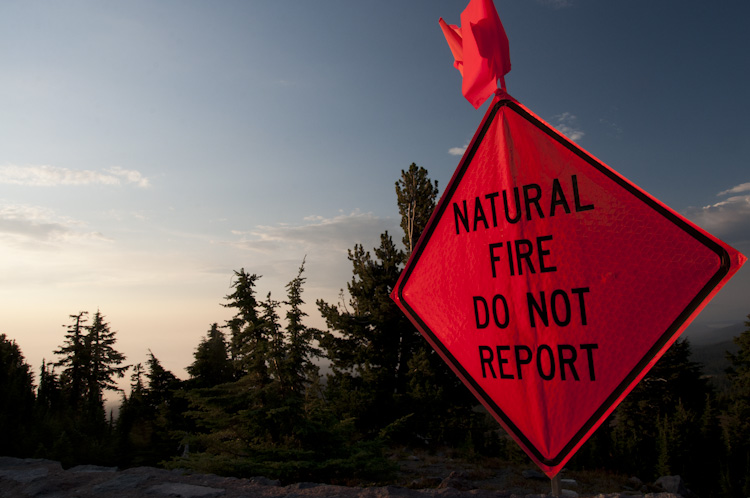



















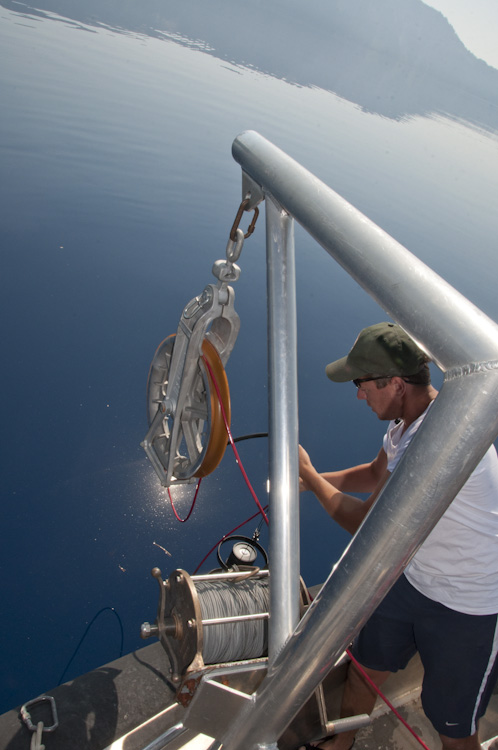











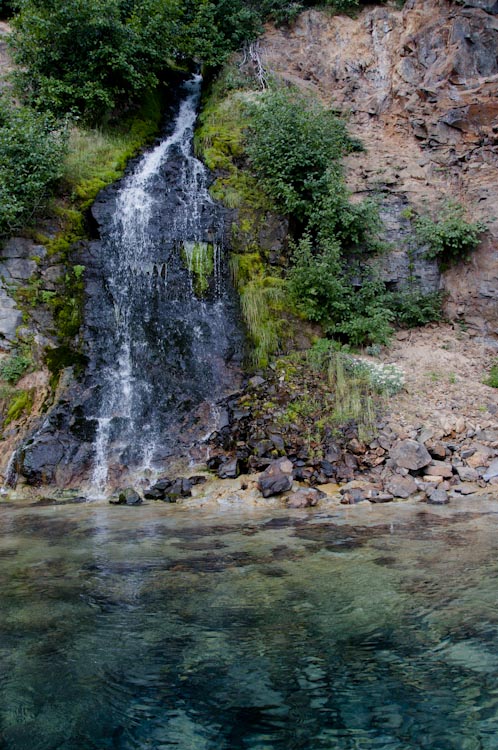
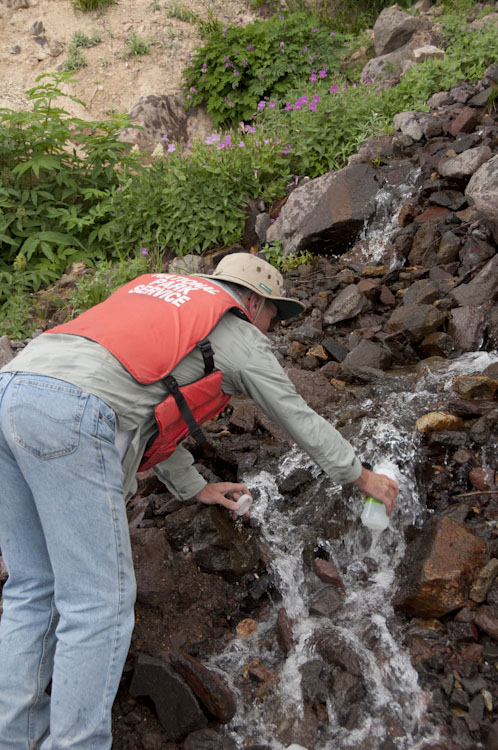





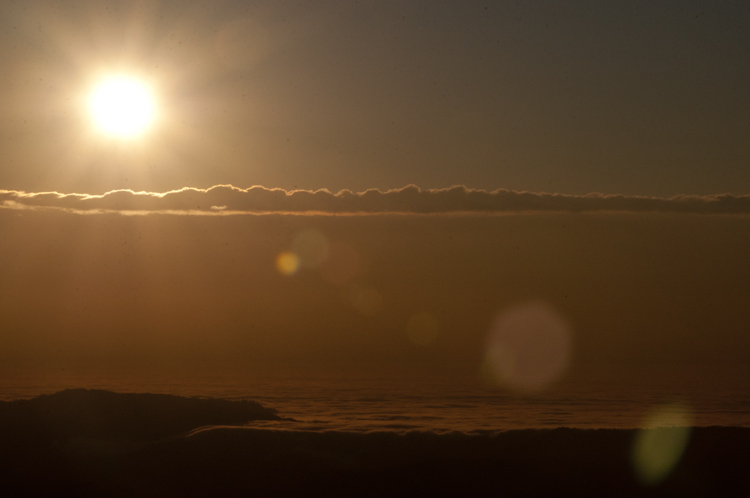

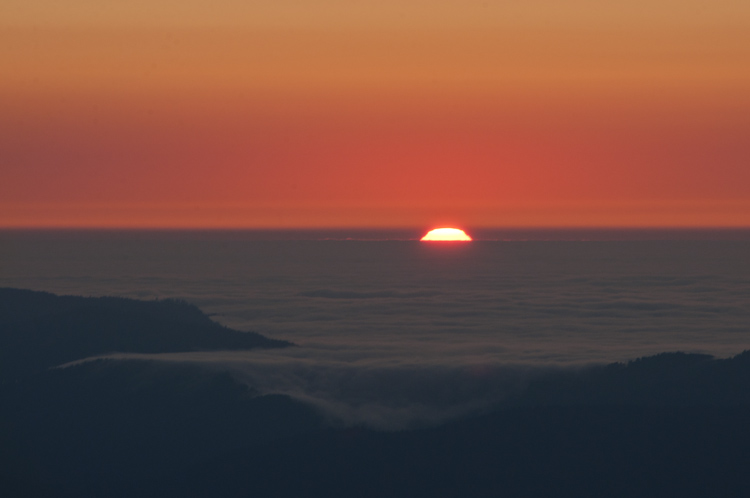







Naiomi, the photos are amazing! I love the scenic shots. Keep up the good work. I really enjoy your blog. 🙂